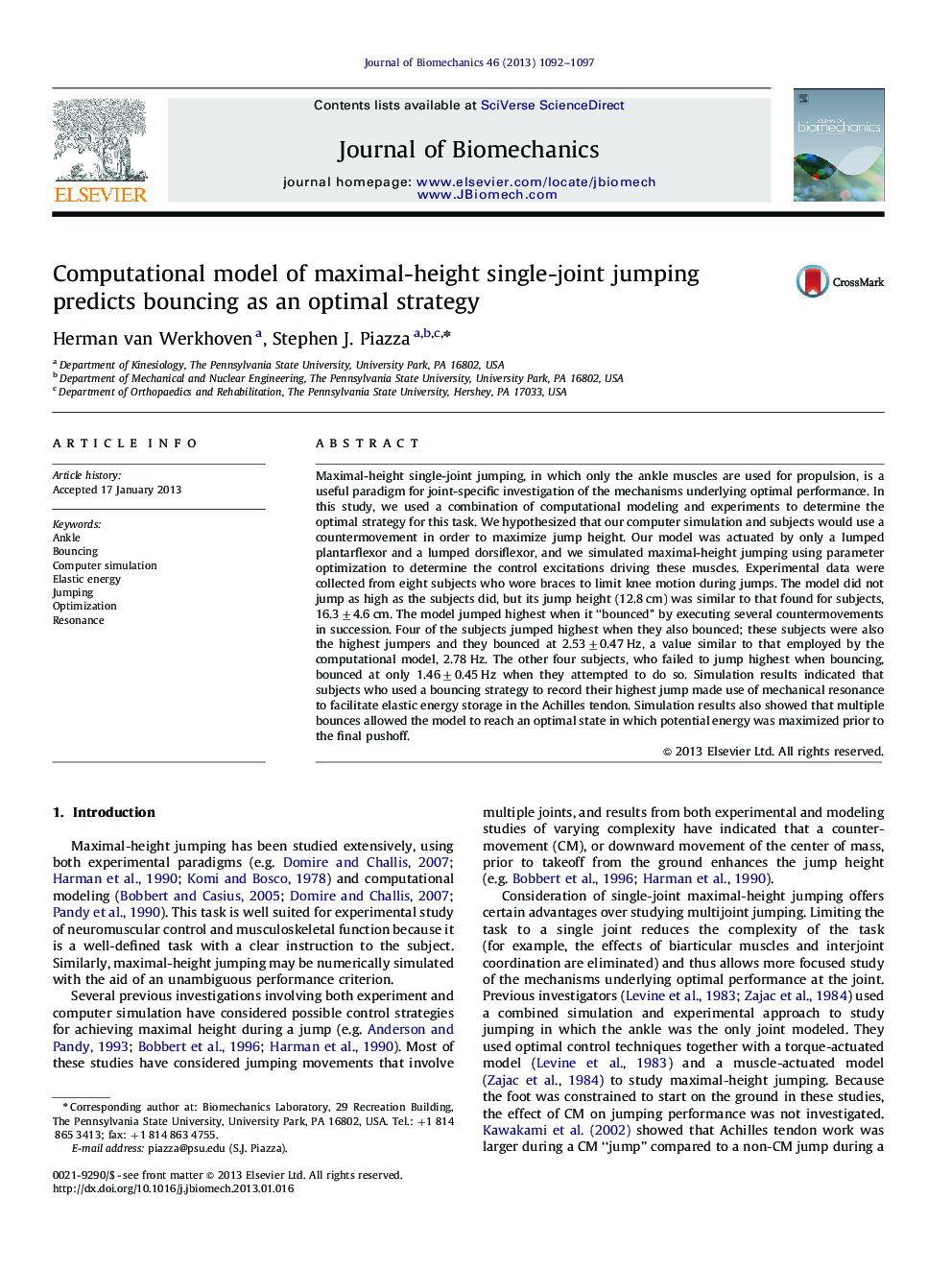| Article ID | Journal | Published Year | Pages | File Type |
|---|---|---|---|---|
| 872434 | Journal of Biomechanics | 2013 | 6 Pages |
Maximal-height single-joint jumping, in which only the ankle muscles are used for propulsion, is a useful paradigm for joint-specific investigation of the mechanisms underlying optimal performance. In this study, we used a combination of computational modeling and experiments to determine the optimal strategy for this task. We hypothesized that our computer simulation and subjects would use a countermovement in order to maximize jump height. Our model was actuated by only a lumped plantarflexor and a lumped dorsiflexor, and we simulated maximal-height jumping using parameter optimization to determine the control excitations driving these muscles. Experimental data were collected from eight subjects who wore braces to limit knee motion during jumps. The model did not jump as high as the subjects did, but its jump height (12.8 cm) was similar to that found for subjects, 16.3±4.6 cm. The model jumped highest when it “bounced” by executing several countermovements in succession. Four of the subjects jumped highest when they also bounced; these subjects were also the highest jumpers and they bounced at 2.53±0.47 Hz, a value similar to that employed by the computational model, 2.78 Hz. The other four subjects, who failed to jump highest when bouncing, bounced at only 1.46±0.45 Hz when they attempted to do so. Simulation results indicated that subjects who used a bouncing strategy to record their highest jump made use of mechanical resonance to facilitate elastic energy storage in the Achilles tendon. Simulation results also showed that multiple bounces allowed the model to reach an optimal state in which potential energy was maximized prior to the final pushoff.
